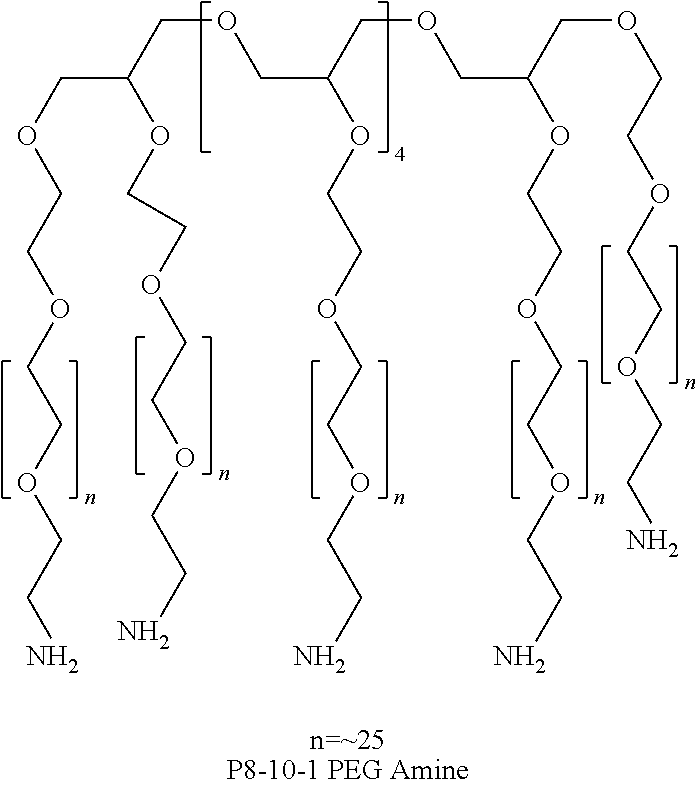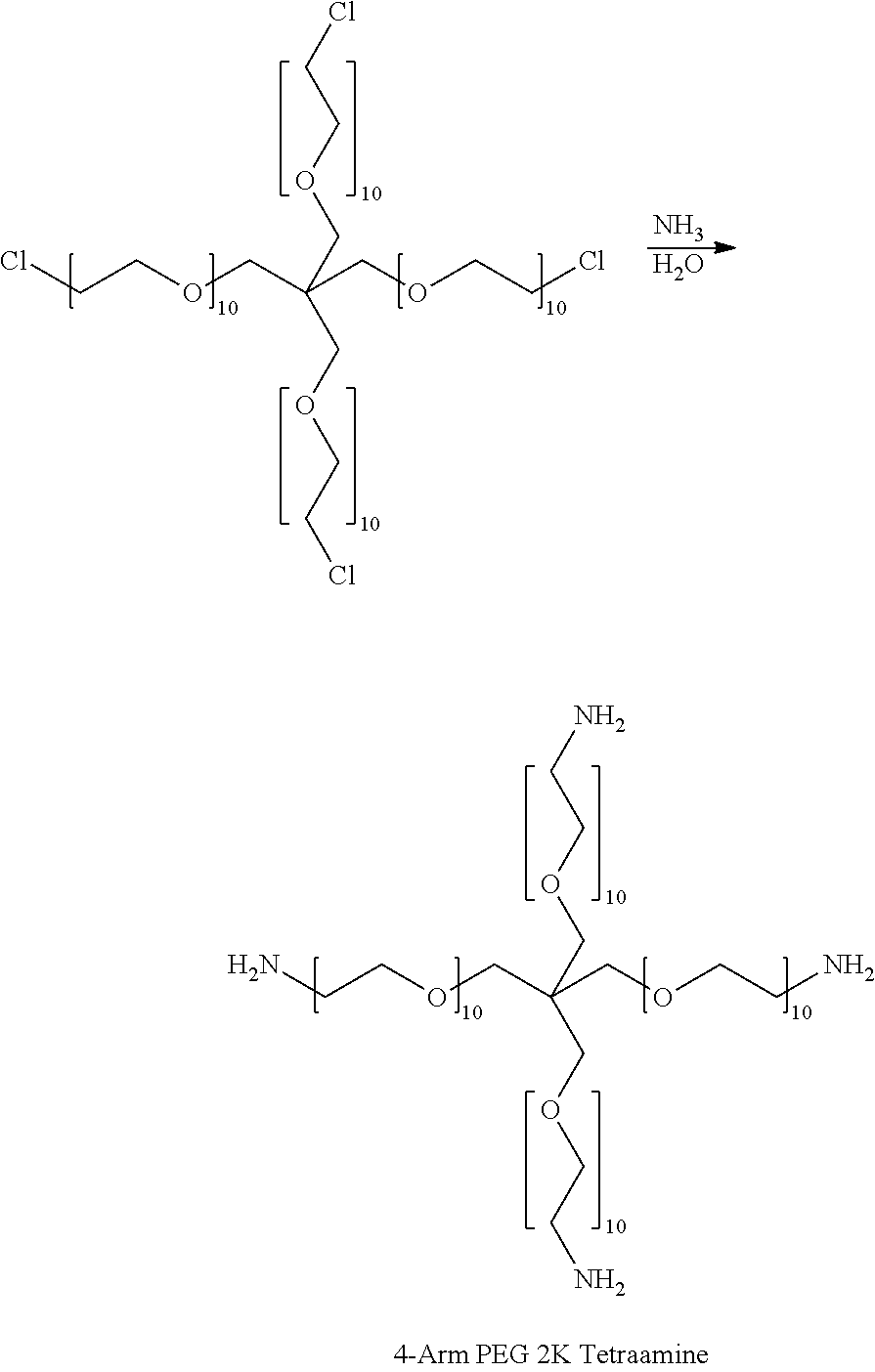Hydrogel tissue adhesive having decreased gelation time and decreased degradation time
a tissue adhesive and hydrogel technology, applied in the field of medical adhesives, can solve the problems of limiting the use of fibrin-based adhesives for internal applications, slow curing of fibrin-based adhesives, and inconvenient use of conventional tissue adhesives, so as to reduce the degradation time of the resulting hydrogel and reduce the gelation tim
- Summary
- Abstract
- Description
- Claims
- Application Information
AI Technical Summary
Benefits of technology
Problems solved by technology
Method used
Image
Examples
examples
[0097]The present invention is further defined in the following Examples. It should be understood that these Examples, while indicating preferred embodiments of the invention, are given by way of illustration only. From the above discussion and these Examples, one skilled in the art can ascertain the essential characteristics of this invention, and without departing from the spirit and scope thereof, can make various changes and modifications of the invention to adapt it to various uses and conditions.
[0098]The meaning of abbreviations used is as follows: the designation “10K” means that a polymer molecule possesses a weight-average molecular weight of 10 kiloDaltons, “min” means minute(s), “h” means hour(s), “sec” means second(s), “mL” means milliliter(s), “mol” means mole(s), “mmol” means millimole(s), “g” means gram(s), “mg” means milligram(s), “EW” means equivalent weight, “MW” means molecular weight, “wt %” means percent by weight, “mol %” means mole percent, “Vol” means volume...
examples 1-15
Hydrogels Having Decreased Gelation Time
[0112]The purpose of these Examples was to demonstrate the decreased gelation time of a hydrogel formed by reacting dextran aldehyde with a mixture of an 8-arm PEG amine (P8-10-1) and a 4-arm PEG amine (P4-2-1) using different thiol additives.
[0113]Varying amounts of thiol additives (obtained from Sigma-Aldrich), as shown in Table 1, were added to 10 g of an aqueous dextran aldehyde solution (D10-50, prepared as described in General Methods; 12 wt % solution) and the resulting solution was allowed to remain overnight at room temperature. The PEG amine solution was prepared by combining a 30 wt % aqueous solution of an 8-arm PEG amine (Mn=10,000, prepared as described in General Methods), and a 30 wt % aqueous solution of a 4-arm PEG amine (Mn=2000, prepared as described in General Methods) in a volume ratio of 9:1.
[0114]The next day, the gelation time for formation of the hydrogel from the dextran aldehyde and PEG amine solutions was measured ...
example 16
Effect of Incubation Time of Thiol Additive in Dextran Aldehyde Solution
[0120]The purpose of this Example was to demonstrate the effect of incubation time of the thiol additive in the dextran aldehyde solution on the gelation time of a hydrogel formed by reacting dextran aldehyde with a mixture of an 8-arm PEG amine (P8-10-1) and a 4-arm PEG amine (P4-2-1) using different thiol additives.
[0121]The reagents were prepared as described above (Examples 1-15). The thiol additive was added to the dextran aldehyde solution and the resulting solution was incubated for a specified amount of time at room temperature or at 37° C., after which time the dextran aldehyde solution was mixed with PEG amine solution and the gel times were determined. The results are shown in Tables 3 and 4, respectively.
[0122]
TABLE 3Effect of Incubation Time of the Thiol Additives in theDextran Aldehyde Solution at Room Temperature onthe Gelation Times of Hydrogels Formed by Reactinga Dextran Aldehyde Solution with ...
PUM
| Property | Measurement | Unit |
|---|---|---|
| equivalent weight | aaaaa | aaaaa |
| weight-average molecular weight | aaaaa | aaaaa |
| molecular weight | aaaaa | aaaaa |
Abstract
Description
Claims
Application Information
 Login to View More
Login to View More - R&D
- Intellectual Property
- Life Sciences
- Materials
- Tech Scout
- Unparalleled Data Quality
- Higher Quality Content
- 60% Fewer Hallucinations
Browse by: Latest US Patents, China's latest patents, Technical Efficacy Thesaurus, Application Domain, Technology Topic, Popular Technical Reports.
© 2025 PatSnap. All rights reserved.Legal|Privacy policy|Modern Slavery Act Transparency Statement|Sitemap|About US| Contact US: help@patsnap.com


